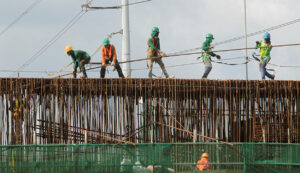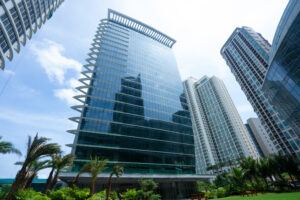Infrastructure spending jumps 13% in 2022

STATE SPENDING on infrastructure rose by 13.4% in 2022, as the government ramped up public works and transportation-related projects.
According to the Department of Budget and Management (DBM), infrastructure and other capital outlays jumped to P1.02 trillion last year, from P895.1 billion in 2021.
The DBM said infrastructure spending also exceeded the government’s P979.3-billion program by 3.7% due to higher-than-expected disbursements by the Department of Public Works and Highways (DPWH) and Department of Transportation (DoTr).
The bulk of the DPWH spending went to implementation and payment of regular infrastructure projects, such as national roads, bridges and flood control projects.
Disbursements by the DoTr, on the other hand, went to the Cebu Bus Rapid Transit (BRT) project and other account payables.
Full-year infrastructure spending was equivalent to 5.8% of gross domestic product (GDP), a tad higher than the 5.6% target and unchanged from 2021.
“The sizable expansion in infrastructure and other capital outlays was on account of the higher spending of DPWH which they attributed to the following factors: fast-tracked implementation of carryover projects and payment of prior years’ accounts payables; adoption of streamlined policies for project implementation and processing of documents in order to ensure that bottlenecks are resolved and spending targets are achieved,” DBM said.
Direct payments made by development partners for the foreign-assisted rail transport projects, such as Metro Manila Subway Project and Malolos-Clark Railway Project, the Metro Manila Subway Project, also helped boost infrastructure spending, DBM said.
In December alone, state spending on infrastructure rose by 14% to P153.5 billion from P134.7 billion in the same month in 2021. Month on month, it surged by 91.3% from P80.2 billion in November.
The DBM attributed the faster spending in December to the DPWH’s disbursements for the construction and rehabilitation of roads and bridges, and flood mitigation activities. It also included the release of funds for the construction of new Senate Building and the new Bureau of Immigration Main Office Building, among others.
“The growth of infrastructure and other capital expenses, however, was slightly trimmed down by the one-off releases in December 2021 for the Revised AFP (Armed Forces of the Philippines) Modernization Program… and for the development of smart campuses of the Commission on Higher Education,” the DBM said.
Rizal Commercial Banking Corp. Chief Economist Michael L. Ricafort said in a Viber message that the higher infrastructure spending may have helped drive economic growth in 2022.
“(Infrastructure spending) could continue to support relatively faster economic growth for the coming years due to the commitments of the administration to continue and even add to the previous administration’s various infrastructure projects and may include more financing options such as public-private partnerships and other hybrid funding arrangements,” Mr. Ricafort said.
The Philippines expanded by 7.6% last year, the fastest economic growth since 1976, and above the government’s 6.5-7.5% goal. It was also faster than the 5.7% growth in 2021.
“[The] increase in spending on infrastructure benefited from favorable base effects as 2022 saw a much more open economy with restrictions lowered after COVID cases waned,” ING Bank N.V. Manila Senior Economist Nicholas Antonio T. Mapa likewise said in a Viber message.
“We’ll have to see if the government can sustain this pace of spending this year given budget constraints due to high levels of debt,” he added.
The National Government’s outstanding debt hit a record high of P13.75 trillion as of end-February.
The government plans to spend at least 5-6% of GDP on infrastructure annually. — Aaron Michael C. Sy




